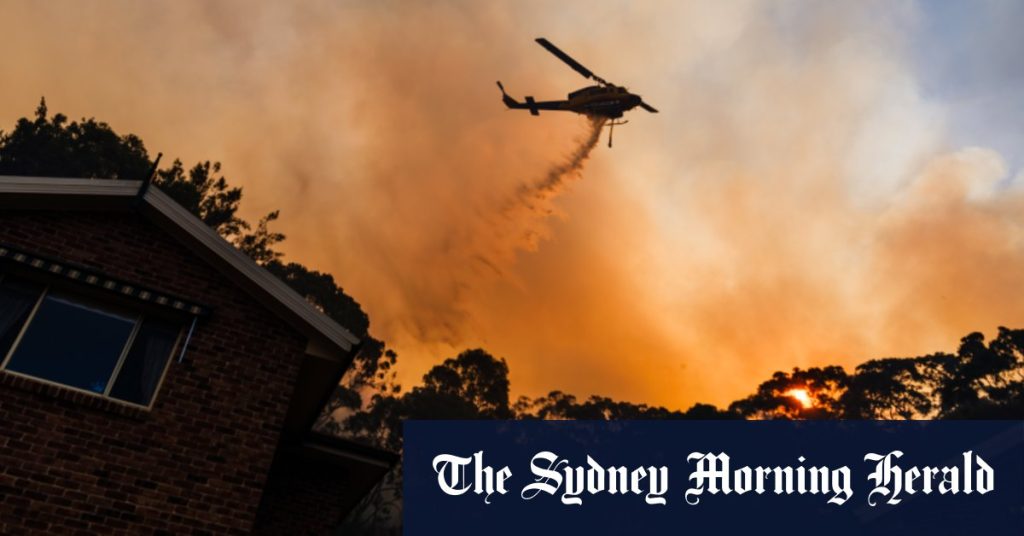Efforts to control a bushfire that quickly burst containment lines on Sydney’s northern beaches will continue on Sunday as fire crews race against the clock to reduce fuel in suburbs that have not burned in decades. The NSW Rural Fire Service issued an emergency warning on Saturday afternoon regarding a blaze on Meatworks Avenue at Oxford Falls, which reached 100 hectares by 8pm. The fire began as a planned burn but quickly escalated, prompting some residents in the Cromer Heights area to be told it was too late to leave. The fire is now being controlled, but crews are strengthening control lines and may have to conduct further backburns in the coming hours to prevent flare-ups.
Wet conditions in the previous financial year meant that the NSW Rural Fire Service only completed 43% of its 325,000-hectare hazard reduction target. However, the service had burnt 70% of its hazard reduction target in areas surrounding homes and properties. Crews are focusing on the area where the blaze escaped containment, as it had not burned in 30 years. Despite falling behind on their hazard reduction plan due to three wet years, firefighters are not taking increased risks to catch up. While warmer temperatures in August and September provided an opportunity for burns to take place, safety remains a top priority for the crews.
Efforts to control the bushfire behind a retirement home in Cromer Heights are ongoing, with crews working to strengthen control lines and anticipate potential flare-ups by conducting further backburns. While the fire is now being controlled, the need to reduce fuel in areas that have not burnt in decades remains a priority. The wet conditions in the past financial year resulted in the NSW Rural Fire Service falling behind on its hazard reduction target, completing only 43% of the planned burns. However, crews had focused on reducing fuel around homes and properties, with 70% of the hazard reduction target completed in those areas.
The firefighters on the ground understand the importance of hazard reduction burns and the need to get the work done, despite falling behind schedule. They are aware of the risks involved and prioritize safety in all operations to prevent further threats to homes and properties. Although warmer temperatures in recent months provided an opportunity for burns to happen, crews are not taking unnecessary risks to catch up on the target. The focus remains on completing hazard reduction burns safely and effectively to reduce the risk of future bushfires.
RFS spokesman Inspector Ben Shepherd emphasized the importance of completing hazard reduction burns safely and avoiding unnecessary risks to catch up on the target. While crews are working to strengthen control lines and conduct backburns to prevent flare-ups, safety remains the top priority. The area where the fire escaped containment had not burned in 30 years, highlighting the importance of reducing fuel in areas that have been untouched by fire for decades. Despite the challenges of falling behind on the hazard reduction target, firefighters are committed to completing the work safely and effectively.
Efforts to control the bushfire on Sydney’s northern beaches continue as fire crews race against the clock to reduce fuel in suburbs that have not experienced burns in decades. Despite falling behind on the hazard reduction target due to wet conditions in the previous financial year, crews remain focused on completing burns safely and effectively. The priority is to reduce fuel in areas surrounding homes and properties to prevent further threats, with crews working to strengthen control lines and conduct backburns to contain the blaze. Safety is paramount in all operations, with firefighters prioritizing the completion of hazard reduction burns to minimize the risk of future bushfires.


